News
Hellraiser Anniversary – Celebrating 30 Years of Hell
Hellraiser – Clive Barker’s visceral masterpiece of horror and crimson eroticism – celebrates thirty years of terror today. After three decades of raising the damned, it’s time we look back at this grotesque work of art and give our thanks. I’m Manic Exorcism and it’s time I take you all back to Hell!
Redesigning Hell
In ancient lore there has always been the spectral fear of the Hell-mouth (aka: gates of Hell), that foreboding subterranean threshold ghastly bridging the inescapable span between two milestone timelines – the ending of mortal life and the awakening of eternity. Plumes of acrid smoke billowing upwards to darken the cracked heights of the underworld. Screams of the damned deafening out all sound save the cackling banter of fallen angels. And misery – oh such misery yet to be explored – running over like foams of blood brimming the Devil’s festive cup, a devil who sups on the anguish of lost souls. These were the visions of Hell as we once knew them.
Medieval sermons were ripe with graphic warnings of the Underworld prepared for the Devil and his accursed own. Dante and John Milton both – through the eloquence of their artful words – painted a haunting visual of what the lost soul could expect at the final gasp of a wasted life. Pits. Flames. A multi-leveled extravaganza of constant suffering without end or relief.
Even Jesus of Nazareth gave His audience a gruesome and elaborate depiction of the final judgment. Whichever side you find yourself on – believer or not – it’s hard to deny that Hell has simply been ingrained into our cultural mind. Frighteningly, it’s something we all just know about, whatever side you fall on.
The Order of Gash
Then into the stygian mix appeared Clive Barker with his fresh and stylized vision of Hell – one that would reshape the concepts we earlier held onto – and redefined the landscape of horror for generations to follow.
Hellraiser did not begin on the silver screen, but at first was a sleeping dream locked between the pages of Barker’s beautifully composed The Hellbound Heart. In the novella, Barker retold the legend of Faust while interweaving it within a love story – a sick, perverted love story of taboo desires and damning passion.
Unhappy with the final results of his previous stories brought to film, Clive Barker himself would direct Hellraiser, and as result the movie became the final revision of his original idea. For a debut film, Barker made a name for himself in the field of horror and became a new legend.
But more than a horror writer/director – far more I would argue – Clive Barker is a contemporary philosopher who does scare us, but it’s not the visuals he gives us. It’s the concepts behind those visuals. Take, for instance, Hellraiser.
As I said before, we knew about Hell. The Hell-mouth awaited at the final dusk of mortal despair, the last desperate breath before the mortal chokes on his own bile and the lights leave his eyes. Then and only then could that man gain access to Hell.
In Hellraiser, Hell is not limited to the venues of death. Hell is all around us. We open Hell by our desires – however perverse they are, the more taboo the better in fact. The movie opens with the question, “What’s your pleasure, sir?” However way you answer, that will determine which layer – or lair – of Hell your needs will access.
Uncle Frank (Sean Chapman) – one of the villains/victims of the movie – opens the gateway. Seated in meditational pose within a square of lit candles, he puzzles over the riddle of the Box deep into the waning hours of night. Then, by fate or stupid coincidence, his makes progress. The Lament Configuration, stirs. Light glistens darkly from its lacquered sides. A bell tolls from a dimension waiting behind the walls of our consciousness, and vanilla light bars across the shadows as the reek of fragrant decay grows stronger around him.
Chains. Cold chains with hooked tips dig into the man’s flesh, sliding between muscle and bone, opening Frank like a wailing book, red on each turning page of flesh. And in the midst of all this structured mayhem of spiraling columns, and chains and succulent agony, are the Order of Gash, the priesthood of Hell and masters of all the secrets of pain.
That’s all within the opening segment of the movie, but already we – the watery-eyed audience – know what kind of film we are in for. This isn’t a typical horror movie, nor a slasher. There isn’t a virgin who will survive a masked killer in the end. This isn’t a good vs evil battle across nightmares or a chase through chainsaw massacres. This is a look into the perverted nature of all of our hearts. Told through Frank, and then through Julia (Clare Higgins) – but that comes later.
What we’ve learned from Hellraiser
Hell was always there. It was not disturbing Frank. There was no tempter whispering lustful promises of carnal ecstasy in his ear. No one made him open the box. Nor was there anyone forcing him to take it. “What’s your pleasure, sir?” he was asked. “The box,” he answered. He sought the Configuration out himself, paid for it, purchased it, became its newest owner and soon-to-be prey. But it was all because Frank wanted it, though he may not have understood the enormity of what he was about to unleash.
Frank’s desires opened Hell, welcomed it in, and we are left with a dire warning. It’s true the heart wants what the heart wants, but the heart might not be so trustworthy at times with its own curious desires. Deep stuff for a horror film released in the latter end of the 80’s. It’s a brilliant achievement of independent cinema, one that makes us think while being entertained at the same time. Audiences left the show with a fresh new respect for Hell, a Hell that inhabits the world around us and can be unlocked at any time if we’re not careful.
Julia’s role is one similar to Frank’s, though told from the perspective of feminine determination and strength. She’s married to Frank’s brother, and their marriage is strained at best, but her heart belongs to Frank – a man who truly understood how to make her skin perspire with need and want. Through the course of the movie’s narrative Julia becomes hell-bent in getting what she too desires – Frank back into her life. And this beautiful wife becomes a savage murderer in order to get what she wants. Never once does she consider the consequences of her selfish need for that just-beyond-her-reach pleasure. But lo! She’s found a way to obtain that pleasure, and blood washes off her hands easy enough.
Clive Barker presents humanity at its most primal as well as its most interesting state of being. Frank and Julia are not monsters or demons, but their actions are hellish by our moral standards. They lure unsuspecting men into their house of carnage, beat them to death and leave them to die on a moldy attic floor. Frank drains the fluids leaking from their bodies in order to regenerate himself. Julia provides him sustenance and holds to the promise that they both will be together forever.
The Cenobites are unbiased observers. They do not punish the wicked for their sins. They do not judge either of Frank or Julia’s actions as right or wrong. There is a cold indifference in how Doug Bradley plays the iconic Pinhead. The Cenobites are demons to some, and angels to others. They answer the call from beyond, and they welcome each one of us who unlock the puzzle of the box to Hell.
After thirty years, Hellraiser is still my absolute favorite horror film. Both it and its sequel (Hellbound) delve into the depravity and desperation of the human heart. This has been Manic Exorcism, and I welcome you to Hell.
Fin: The Hellraiser trilogy was released on Blu-ray by Arrow Video. For more information on the handsome collection, please click here
'Civil War' Review: Is It Worth Watching?
Follow our new YouTube channel "Mysteries and Movies" here.

Lists
Thrills and Chills: Ranking ‘Radio Silence’ Films from Bloody Brilliant to Just Bloody
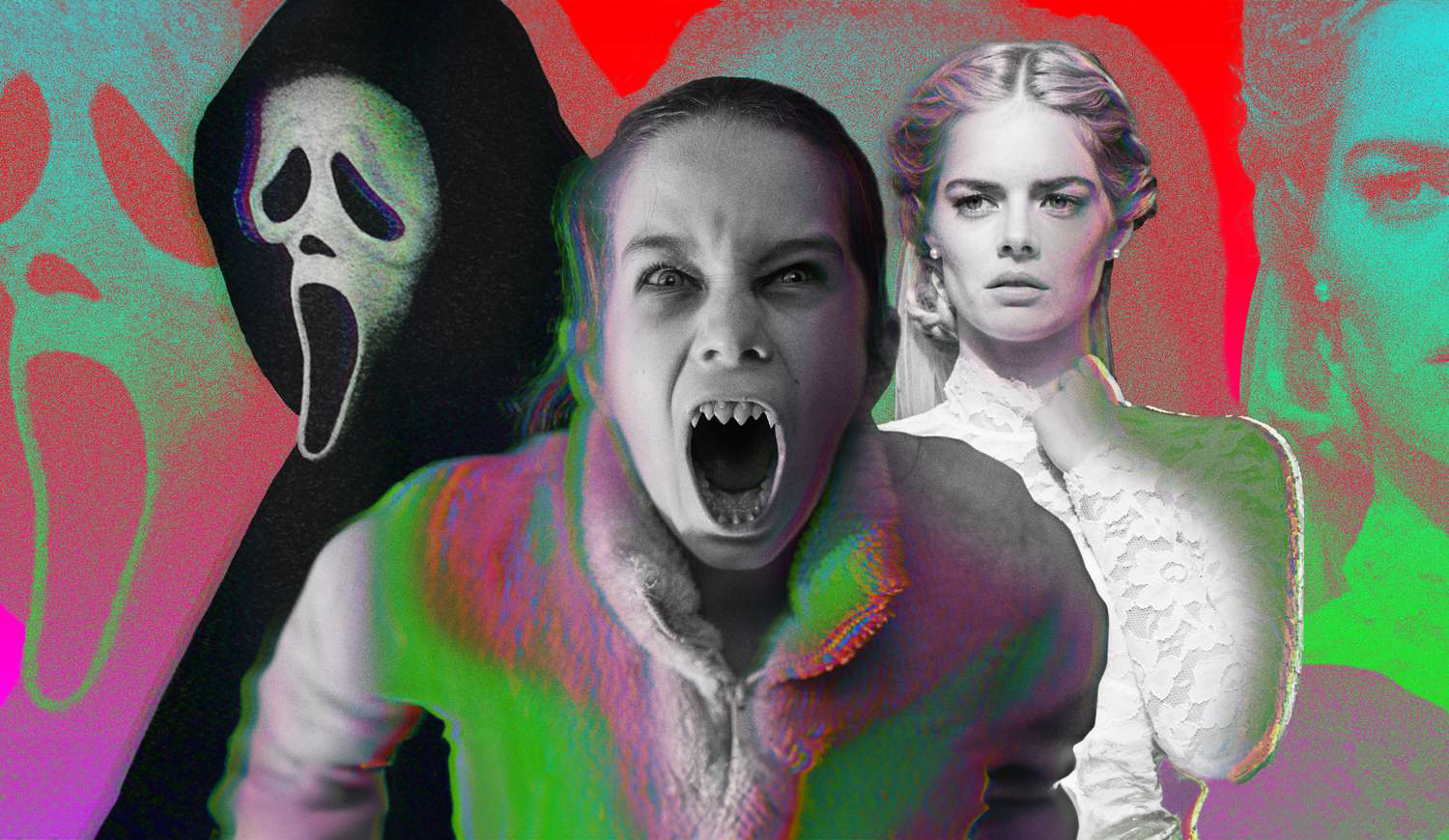
Matt Bettinelli-Olpin, Tyler Gillett, and Chad Villella are all filmmakers under the collective label called Radio Silence. Bettinelli-Olpin and Gillett are the primary directors under that moniker while Villella produces.
They have gained popularity over the past 13 years and their films have become known as having a certain Radio Silence “signature.” They are bloody, usually contain monsters, and have breakneck action sequences. Their recent film Abigail exemplifies that signature and is perhaps their best film yet. They are currently working on a reboot of John Carpenter’s Escape From New York.
We thought we would go through the list of projects they have directed and rank them from high to low. None of the movies and shorts on this list are bad, they all have their merits. These rankings from top to bottom are just ones we felt showcased their talents the best.
We didn’t include movies they produced but didn’t direct.
#1. Abigail
An update to the second film on this list, Abagail is the natural progression of Radio Silence’s love of lockdown horror. It follows in pretty much the same footsteps of Ready or Not, but manages to go one better — make it about vampires.
#2. Ready or Not
This film put Radio Silence on the map. While not as successful at the box office as some of their other films, Ready or Not proved that the team could step outside their limited anthology space and create a fun, thrilling, and bloody adventure-length film.
#3. Scream (2022)
While Scream will always be a polarizing franchise, this prequel, sequel, reboot — however you want to label it showed just how much Radio Silence knew the source material. It wasn’t lazy or cash-grabby, just a good time with legendary characters we love and new ones who grew on us.
#4 Southbound (The Way Out)
Radio Silence tosses their found footage modus operandi for this anthology film. Responsible for the bookend stories, they create a terrifying world in their segment titled The Way Out, which involves strange floating beings and some sort of time loop. It’s kind of the first time we see their work without a shaky cam. If we were to rank this entire film, it would remain at this position on the list.
#5. V/H/S (10/31/98)
The film that started it all for Radio Silence. Or should we say the segment that started it all. Even though this isn’t feature-length what they managed to do with the time they had was very good. Their chapter was titled 10/31/98, a found-footage short involving a group of friends who crash what they think is a staged exorcism only to learn not to assume things on Halloween night.
#6. Scream VI
Cranking up the action, moving to the big city and letting Ghostface use a shotgun, Scream VI turned the franchise on its head. Like their first one, this film played with canon and managed to win over a lot of fans in its direction, but alienated others for coloring too far outside the lines of Wes Craven’s beloved series. If any sequel was showing how the trope was going stale it was Scream VI, but it managed to squeeze some fresh blood out of this nearly three-decade mainstay.
#7. Devil’s Due
Fairly underrated, this, Radio Silence’s first feature-length film, is a sampler of things they took from V/H/S. It was filmed in an omnipresent found footage style, showcasing a form of possession, and features clueless men. Since this was their first bonafide major studio job it’s a wonderful touchstone to see how far they have come with their storytelling.
'Civil War' Review: Is It Worth Watching?
Follow our new YouTube channel "Mysteries and Movies" here.
News
Perhaps the Scariest, Most Disturbing Series of The Year

You may have never heard of Richard Gadd, but that will probably change after this month. His mini-series Baby Reindeer just hit Netflix and it’s a terrifying deep dive into abuse, addiction, and mental illness. What is even scarier is that it’s based on Gadd’s real-life hardships.
The crux of the story is about a man named Donny Dunn played by Gadd who wants to be a stand-up comedian, but it’s not working out so well thanks to stage fright stemming from his insecurity.
One day at his day job he meets a woman named Martha, played to unhinged perfection by Jessica Gunning, who is instantly charmed by Donny’s kindness and good looks. It doesn’t take long before she nicknames him “Baby Reindeer” and begins to relentlessly stalk him. But that is just the apex of Donny’s problems, he has his own incredibly disturbing issues.
This mini-series should come with a lot of triggers, so just be warned it is not for the faint of heart. The horrors here don’t come from blood and gore, but from physical and mental abuse that go beyond any physiological thriller you may have ever seen.
“It’s very emotionally true, obviously: I was severely stalked and severely abused,” Gadd said to People, explaining why he changed some aspects of the story. “But we wanted it to exist in the sphere of art, as well as protect the people it’s based on.”
The series has gained momentum thanks to positive word-of-mouth, and Gadd is getting used to the notoriety.
“It’s clearly struck a chord,” he told The Guardian. “I really did believe in it, but it’s taken off so quickly that I do feel a bit windswept.”
You can stream Baby Reindeer on Netflix right now.
If you or someone you know has been sexually assaulted, please contact the National Sexual Assault Hotline at 1-800-656-HOPE (4673) or go to rainn.org.
'Civil War' Review: Is It Worth Watching?
Follow our new YouTube channel "Mysteries and Movies" here.
Movies
The Original ‘Beetlejuice’ Sequel Had an Interesting Location
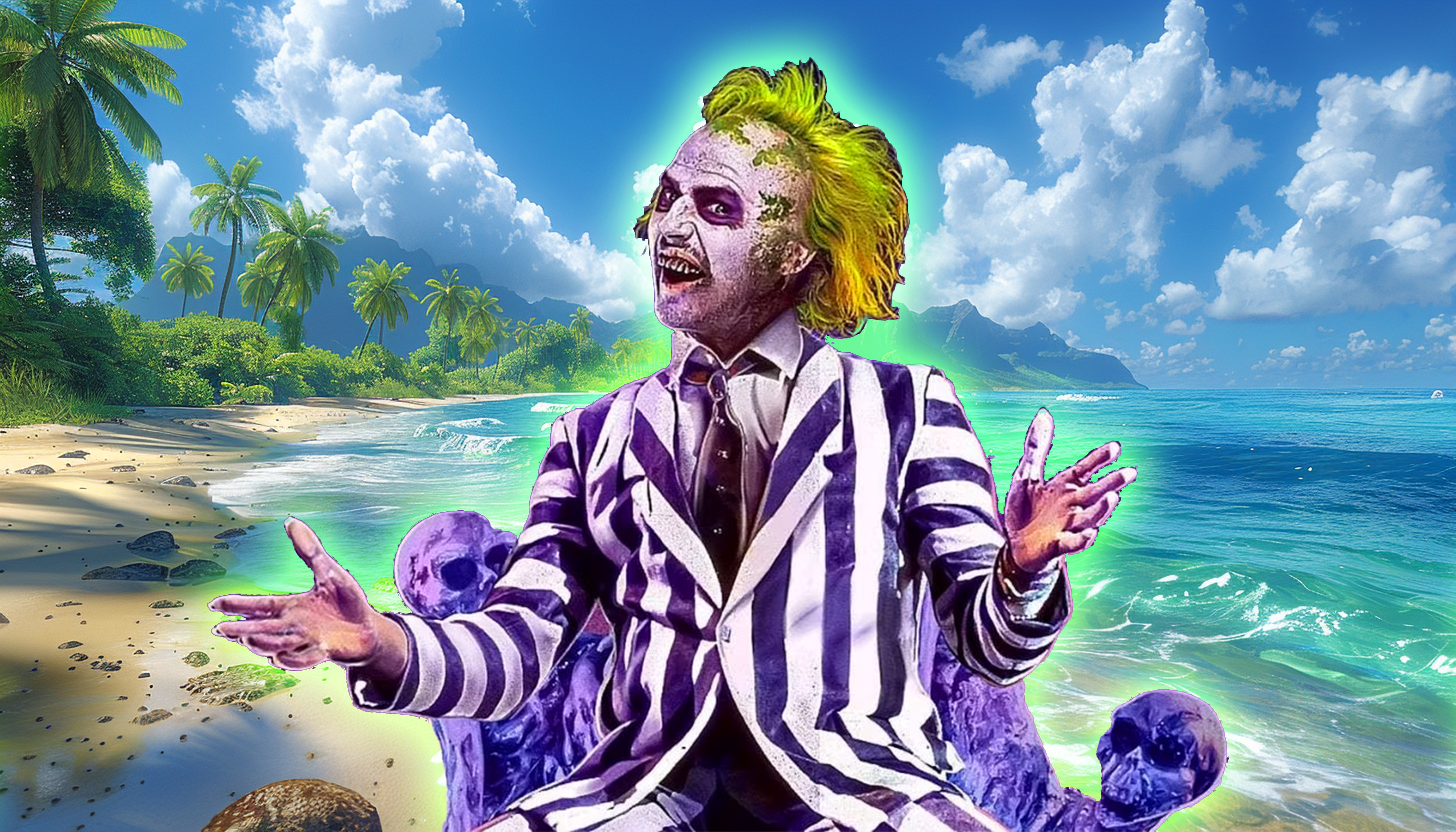
Back in the late ’80s and early ’90s sequels to hit movies weren’t as linear as they are today. It was more like “let’s re-do the situation but in a different location.” Remember Speed 2, or National Lampoon’s European Vacation? Even Aliens, as good as it is, follows a lot of the plot points of the original; people stuck on a ship, an android, a little girl in peril instead of a cat. So it makes sense that one of the most popular supernatural comedies of all time, Beetlejuice would follow the same pattern.
In 1991 Tim Burton was interested in doing a sequel to his 1988 original, it was called Beetlejuice Goes Hawaiian:
“The Deetz family moves to Hawaii to develop a resort. Construction begins, and it’s quickly discovered that the hotel will be sitting on top of an ancient burial ground. Beetlejuice comes in to save the day.”
Burton liked the script but wanted some re-writes so he asked then-hot screenwriter Daniel Waters who had just got done contributing to Heathers. He passed on the opportunity so producer David Geffen offered it to Troop Beverly Hills scribe Pamela Norris to no avail.
Eventually, Warner Bros. asked Kevin Smith to punch up Beetlejuice Goes Hawaiian, he scoffed at the idea, saying, “Didn’t we say all we needed to say in the first Beetlejuice? Must we go tropical?”
Nine years later the sequel was killed. The studio said Winona Ryder was now too old for the part and an entire re-cast needed to happen. But Burton never gave up, there were a lot of directions he wanted to take his characters, including a Disney crossover.
“We talked about lots of different things,” the director said in Entertainment Weekly. “That was early on when we were going, Beetlejuice and the Haunted Mansion, Beetlejuice Goes West, whatever. Lots of things came up.”
Fast-forward to 2011 when another script was pitched for a sequel. This time the writer of Burton’s Dark Shadows, Seth Grahame-Smith was hired and he wanted to make sure the story wasn’t a cash-grabbing remake or reboot. Four years later, in 2015, a script was approved with both Ryder and Keaton saying they would return to their respective roles. In 2017 that script was revamped and then eventually shelved in 2019.
During the time the sequel script was being tossed around in Hollywood, in 2016 an artist named Alex Murillo posted what looked like one-sheets for a Beetlejuice sequel. Although they were fabricated and had no affiliation with Warner Bros. people thought they were real.
Perhaps the virality of the artwork sparked interest in a Beetlejuice sequel once again, and finally, it was confirmed in 2022 Beetlejuice 2 had a green light from a script written by Wednesday writers Alfred Gough and Miles Millar. The star of that series Jenna Ortega signed on to the new movie with filming starting in 2023. It was also confirmed that Danny Elfman would return to do the score.
Burton and Keaton agreed that the new film titled Beetlejuice, Beetlejuice wouldn’t rely on CGI or other other forms of technology. They wanted the film to feel “handmade.” The film wrapped in November 2023.
It’s been over three decades to come up with a sequel to Beetlejuice. Hopefully, since they said aloha to Beetlejuice Goes Hawaiian there has been enough time and creativity to ensure Beetlejuice, Beetlejuice will not only honor the characters, but fans of the original.
Beetlejuice, Beetlejuice will open theatrically on September 6.
'Civil War' Review: Is It Worth Watching?
Follow our new YouTube channel "Mysteries and Movies" here.
-

 News6 days ago
News6 days agoWoman Brings Corpse Into Bank To Sign Loan Papers
-

 News7 days ago
News7 days agoHome Depot’s 12-Foot Skeleton Returns with a New Friend, Plus New Life-Size Prop from Spirit Halloween
-

 News4 days ago
News4 days agoBrad Dourif Says He’s Retiring Except For One Important Role
-

 Strange and Unusual5 days ago
Strange and Unusual5 days agoMan Arrested for Allegedly Taking a Severed Leg From Crash Site And Eating It
-

 Movies6 days ago
Movies6 days agoPart Concert, Part Horror Movie M. Night Shyamalan’s ‘Trap’ Trailer Released
-

 Movies6 days ago
Movies6 days ago‘The Strangers’ Invaded Coachella in Instagramable PR Stunt
-

 Movies5 days ago
Movies5 days agoAnother Creepy Spider Movie Hits Shudder This Month
-
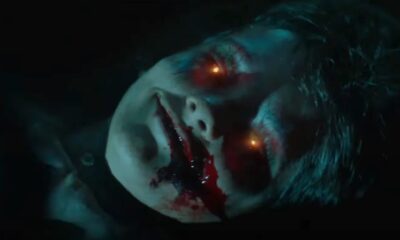
 Movies6 days ago
Movies6 days agoRenny Harlin’s Recent Horror Movie ‘Refuge’ Releasing in U.S. This Month












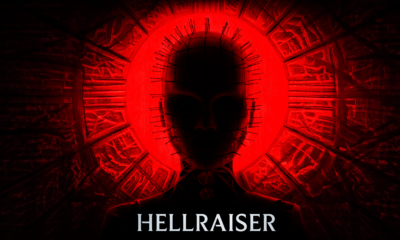

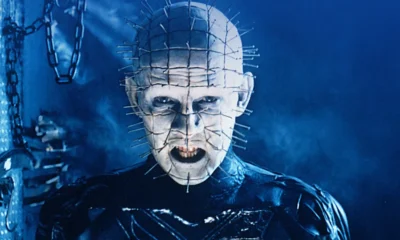

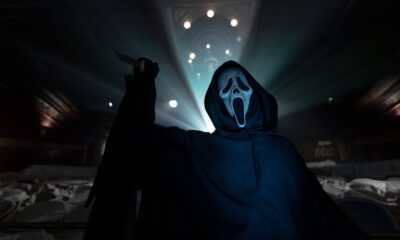



















You must be logged in to post a comment Login